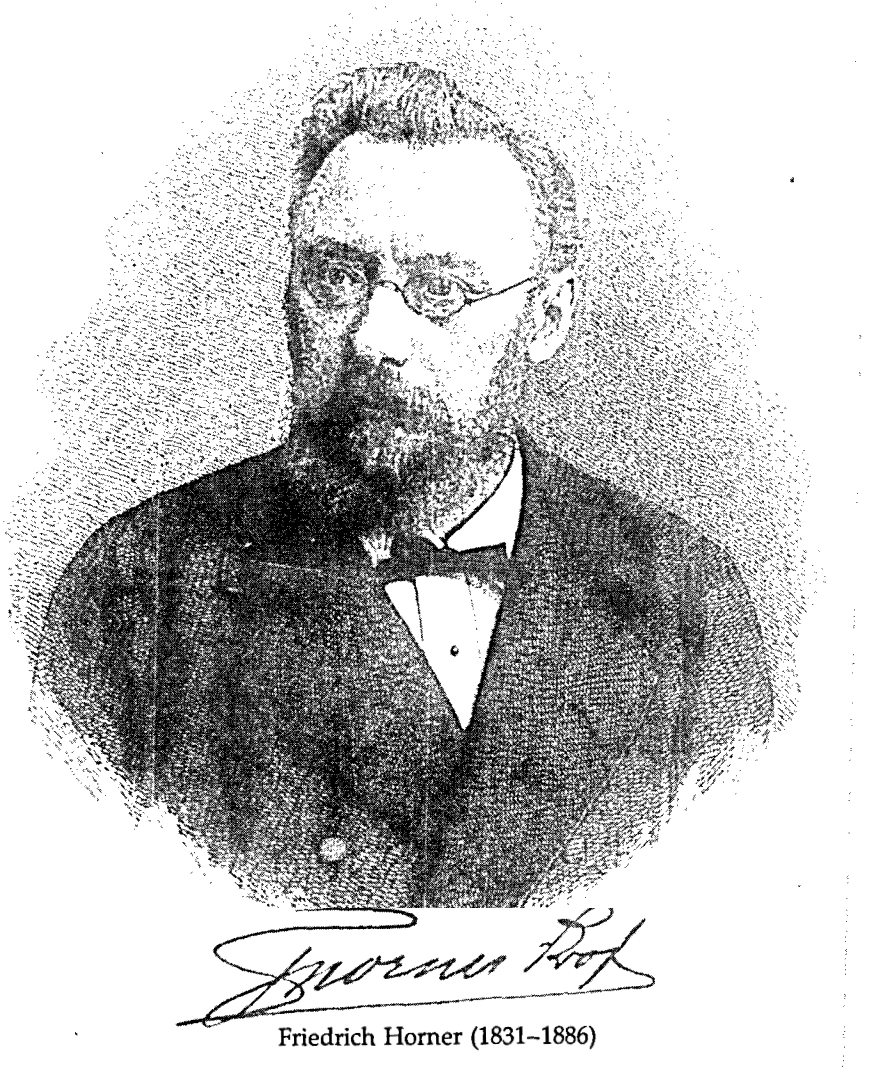Friedrich Horner, a Swiss ophthalmologist born in Zurich in 1831, left an indelible mark on medical science through his meticulous work on oculosympathetic lesions.
 His name endures in the annals of neuro-ophthalmology with the eponymous "Horner's syndrome," characterized by a triad of ptosis, miosis, and enophthalmos. While his contributions extended beyond this condition, his seminal observations in this area remain a cornerstone of clinical neurology.
His name endures in the annals of neuro-ophthalmology with the eponymous "Horner's syndrome," characterized by a triad of ptosis, miosis, and enophthalmos. While his contributions extended beyond this condition, his seminal observations in this area remain a cornerstone of clinical neurology.
A Life Steeped in Learning and Innovation
Horner's father, a physician, inspired his medical journey. After qualifying as a doctor, Horner pursued advanced training in Vienna, where he studied under Edvard Jaeger, mastering the newly invented ophthalmoscope. His career flourished when he joined Albrecht von Graefe in Berlin, a mentor who shaped Horner's decision to specialize in ophthalmology.
Horner's return to Zurich in 1856 marked the beginning of a prolific period. He established a thriving practice and led the University Eye Clinic, transforming it into a prominent center of ophthalmological innovation. Among his numerous achievements, he was the first to introduce antiseptic techniques into ophthalmic surgery, significantly reducing postoperative complications.
Horner’s Syndrome: A Diagnostic Legacy
In 1869, Horner published his groundbreaking observations on what would later be called Horner's syndrome. Through meticulous clinical examination, he described the incomplete ptosis, miosis, and enophthalmos associated with sympathetic nerve lesions. His diagnostic rigor extended to assessing facial temperature asymmetry and pupillary responses to pharmacological agents, laying a foundation for modern diagnostic approaches.
The condition he described involves a disruption along the oculosympathetic pathway, which can result from a variety of etiologies, including brainstem lesions, cervical spinal cord injuries, or tumors of the apex of the lung.
Versatility Beyond Medicine
Horner's contributions transcended clinical medicine. He was deeply engaged in public health, spearheading initiatives such as school hygiene programs and eye screenings for children. During the 1867 cholera epidemic in Zurich, Horner was instrumental in combating the outbreak, showcasing his dedication to societal well-being.
An accomplished organizer, Horner established the Hottingerhof private clinic and contributed to founding Zurich's first children's hospital. His influence extended into academia and municipal governance, reflecting his commitment to improving both healthcare and education.
Horneriana: Preserving His Legacy
Friedrich Horner's legacy endures not only in medical practice but also through a collection of personal writings, correspondence, and artifacts known as "Horneriana," housed at the Museum of Medical History in Zurich. These materials offer insights into his life and work, celebrating his multifaceted contributions to medicine and society.
Conclusion
Friedrich Horner's life exemplified the blend of clinical acumen, innovative spirit, and public service. His work continues to resonate, reminding us of the profound impact a single dedicated individual can have on both medicine and humanity. Horner's syndrome remains a testament to his enduring legacy in the fields of ophthalmology and neurology.
